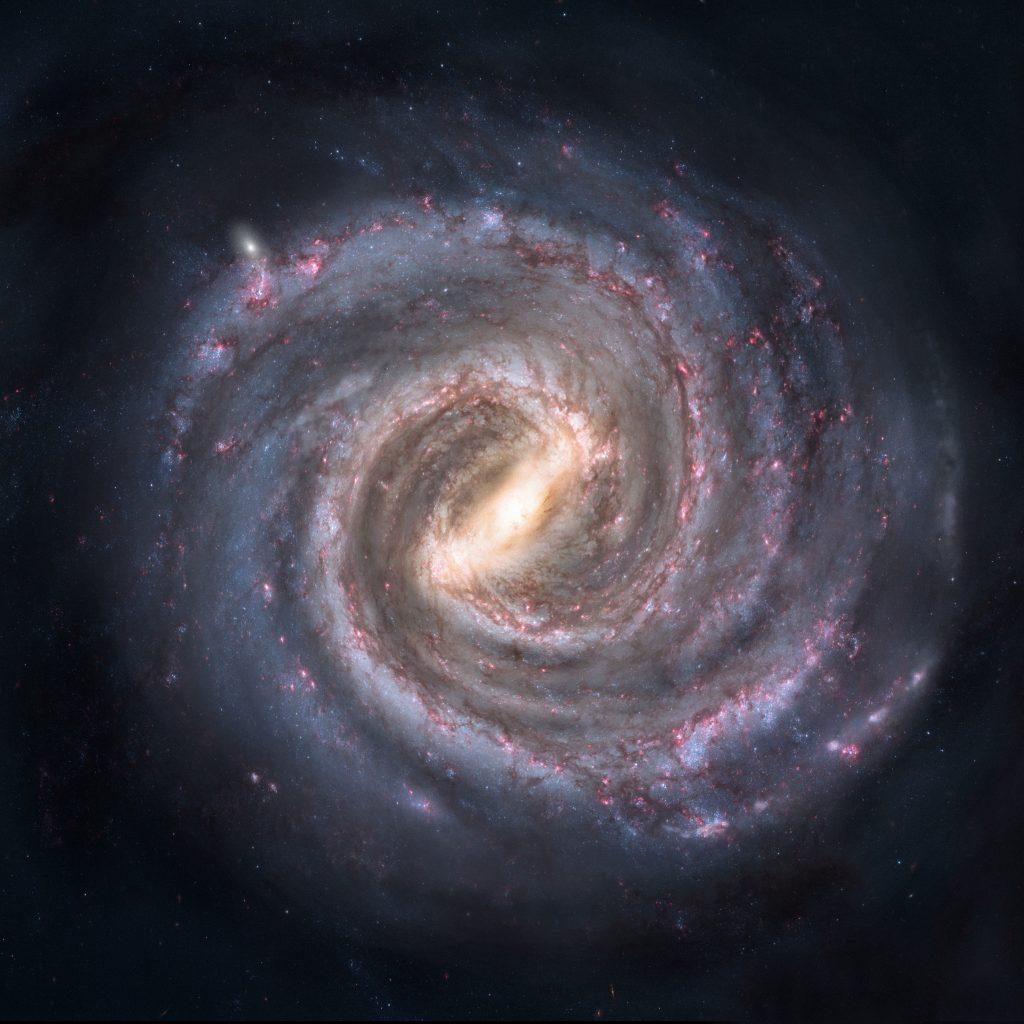What is Our Solar System?
The solar system has one star called Sun, and eight planets revolving around the Sun, and five recognised dwarf planets. It is a part of the milky way galaxy which is spiral in shape and forms the center of it. Scientists have estimated that the edge of the solar system is about 9 billion miles (15 billion kilometers) away from the sun.
Our Solar system is the only system which support life so far but scientists are also exploring interstellar space and other options for the latest findings. Check out the complete details about our Solar System including the planets, moons, etc.
Why is it named the “Solar System”?
Solar System is located in the Milky Way Galaxy called Orion Arm, or Orion Spur. Our Solar System orbits at about 515,000 mph (828,000 kph) speed. Our planetary system is known as the Solar system as anything related to the Sun is called Solar.
The order of the planets in our solar system is starting with the nearest i.e. sun further moving outward next is Mercury, Venus, Earth, Mars, Jupiter, Saturn, Uranus, and Neptune.
Formation of the Solar System
Many scientists think that our solar system is formed from a giant, rotating cloud of gas and dust known as the solar nebula. As the nebula collapsed because of its gravity, it spun faster and flattened into a disk. Most of the material was pulled toward the center which resulted in the formation of the sun. Other particles within the disk collided and adhered together to form asteroid-sized objects named planetesimals. Some of these combined to become the rocky surfaces named asteroids, comets, moons, and planets. The solar wind from the sun was so powerful that it swept away most of the lighter elements, such as hydrogen and helium, from the innermost planets, leaving behind mostly small, rocky worlds. The solar wind was much weaker in the outer regions, however, resulting in gas giants made up mostly of hydrogen and helium forming the outermost planets.
The Sun
The sun is by far the largest object in our solar system. It contains 99.8 percent of the solar system’s mass and is a hot ball of glowing gases. The gravity of the Sun holds the Solar system together keeping everything in its orbit. Planets orbit the sun in oval-shaped paths called ellipses, with the sun slightly off-center of each ellipse. Without the Sun’s energy, there will be no life on earth.
Planets of Solar System
There are eight planets in our Solar System that revolves around the Sun in elliptical orbits. The closest four planets namely Mercury, Venus, Earth, and Mars are termed as terrestrial planets, which means they have a hard rocky surface. The farthest four planets of the solar system namely Jupiter, Saturn, Uranus, and Neptune are called gas giants. These planets are much larger and their surface is composed of gas elements (mostly hydrogen).
| Planets | Moons | Time is taken to complete one Spin on Axis (One Earth Day) |
Length of year | Features |
|---|---|---|---|---|
| Mercury | No moons | 59 Earth days | 88 Earth Days |
|
| Venus | No moons | 243 Earth days | 225 Earth Days |
|
| Earth | 1 Moon | 24 hours | 365 Days |
|
| Mars | 2 moons | Over 24 hours | 687 Earth Days |
|
| Jupiter | 75 moons | 10 Hours | 4,333 Earth Days About 12 Earth years |
|
| Saturn | 82 Moons | 10.7 hours | 10,759 Earth Days 29 Earth years |
|
| Uranus | 27 known moons | 17 hours | 30,687 Earth Days 84 Earth Years |
|
| Neptune | 14 known moons | 16 hours | 165 Earth years |
|
1. Mercury
- It is the nearest planet to the sun.
- It is the smallest planet in our solar system.
- It can be observed just before sunrise or just after sunset, near the horizon.
- It takes only about 88 days to complete one round along its orbit.
- Mercury has no satellite/moon of its own.
- Fastest revolution time.
- Extreme weather +400°C & –200°C.
- Mercury is also known as the Roman God of Commerce.

2. Venus
- It is the brightest planet in the night sky.
- It is the hottest planet.
- It is often called morning or evening star although it is not a star.
- Venus is considered the ‘Earth’s twin’ because its size and shape are very much similar to that of the earth.
- Venus has no moon or satellite of its own.
- It rotates from east to west while the Earth rotates from west to east.

3. The Earth
- The earth is the 3rd nearest planet to the sun, it is the fifth-largest planet.
- It is slightly flattened at the poles. Hence, its shape is described as a Geoid.
- The Earth has only one moon.
- It is known as the Blue Planet.

4. Mars
- It appears slightly reddish due to the presence of iron oxides and, hence, it is also known as the red planet.
- Mars has two small natural satellites or moons.
- Nix Olympia is a mountain spotted on Mars which is 3 times higher than Mountain Everest.
- The name of the two Satellites is Phobos and Deimos.
- It is also known as the Roman God of war.

5. Jupiter
- Jupiter is the largest planet in the solar system.
- The mass of Jupiter is about 318 times that of our Earth.
- It rotates very rapidly on its axis.
- It has faint rings around it.
- It has 75 moons or natural satellites.

6. Saturn
- Saturn appears yellowish.
- It is the second-largest planet in the solar system.
- It looks beautiful because of the rings. It has 7 main rings.
- It has 82 moons or natural satellites.
- Saturn also has a large number of satellites.
- It is the least dense among all the planets.

7. Uranus
- It is called Green Planet because of the presence of Methane gas.
- Like Venus, Uranus also rotates from east to west.
- Uranus has five major moons: Miranda, Ariel, Umbriel, Titania, and Oberon. It has a total of 27 moons.
- It is also known as the Ancient Greek God.
- Known as the “sideways planet” because it rotates on its side.
- 1st planet was found using a telescope.

8. Neptune
- It is the Coldest planet and the windiest planet.
- There are 14 Satellites.
- At least 5 main rings are present.
- Voyager 2 is the only spacecraft that visited there.
- It is an Ice Giant.

Dwarf planets
Dwarf planets are objects similar to planets in the Solar System, however, they are defined as not large enough to qualify to be named as a planet as they didn’t qualify for “cleared their orbital region of other objects.” There are 5 known dwarf planets in the Solar System namely Pluto, Ceres, Eris, Haumea, and Makemake.
Comets
Comets are often recognized as dirty snowballs and consist mainly of ice and rock. When a comet’s orbit comes close to the sun, the ice in its central nucleus turns into gas that shoots out of the comet’s sunlit side, carried by the solar wind outward to form a long tail.
Asteroid belt
The asteroid belt is a region between the planets Mars and Jupiter. In this region of the Asteroid belt, thousands of rocky objects orbit around the Sun. They range in size from tiny dust-like particles to the dwarf planet Ceres.
Kuiper belt
The Kuiper belt is a region of thousands of small bodies that exist outside the orbit of the planets. Objects in the Kuiper belt consist of “ices” such as ammonia, water, and methane.
Facts About our Planet — the Earth
- The estimated age of the Earth: is 4600 million years.
- The Earth is 23½° tilted on its axis and thus makes a 66½º angle with the plane of its orbit
- It takes 365 days and 5 hours and 45 minutes to revolve around the Sun.
- Earth is known as the “watery planet” or the “blue planet” due to the presence of a huge amount of water.
- The earth has a protective blanket of the ozone layer high up in its atmosphere to save a life from harmful ultraviolet radiations coming from the sun.
- Mean distance from the Sun: 149,407,000 km.
- Equatorial diameter: 12753 km.
- Polar diameter: 12710 km
- Equatorial circumference: 40,066 km.
- Period of rotation: 23 hrs. 56 mts. 4.09 sec. (24 hrs.)
- Period of revolution: 365 days 5 hours 48 mts and 45.51 seconds. (365¼ days)
- Total area: 510,100,500 sq. km.
Facts about Solar System
- The Universe or the Cosmos consists of millions of Galaxies. A galaxy is a huge assemblage of stars held together by the forces of gravity.
- The existence of galaxies beyond the Milky Way was first demonstrated by Edwin Hubble in 1924. He proved that the galaxies are flying away from each other and that the farther they are, the faster they fly. This means that the universe is expanding like a balloon that is being blown up.
- Our galaxy is the Milky Way Galaxy (or the Akash Ganga). It is a spiral. It consists of over 100 billion stars rotating and revolving about its center. The nearest galaxy to ours is Andromeda.

- The Big Bang Theory evaluates that 15 billion years ago, cosmic matter (universe) was in an extremely compressed state, from which the expansion was started by a primordial explosion. This explosion broke up the super-dense ball and cast its fragments far out into space, where they are still traveling at thousands of miles per second.
- There are three general kinds of galaxies in the universe namely elliptical, spiral and irregular. The Milky Way is a spiral galaxy.
- It takes our solar system about 230 million years to complete one orbit around the galactic center.
- Light Year: It is the distance covered by light in one year in a vacuum at a speed of 3 105 km/s.
- Astronomical Unit (A.U.): It is the mean distance between the earth and the sun. One light-year is equal to 60,000 A.U.
- Parsec: It depicts the distance at which the mean radius of the earth’s orbit subtends an angle of one second of an arc. It is equal to 3.26 light-years.
- A star’s color indicates the temperature of its surface. The blue color denotes the maximum temperature. Then comes yellow, then red, etc.
- If the star is of the size of the sun, it becomes a White Dwarf. Their central density can reach up to 10 grams per cubic cm.
- The brightest star outside our Solar System is Sirius, also called Dog Star.
- The closest star in Solar System is Proxima Centauri (4.2 light-years away). Then comes Alpha Centauri (4.3 light-years away) and Barnard’s Star (5.9 light-years away).

Source link

